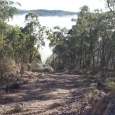Leaderboard
Popular Content
Showing content with the highest reputation on 05/09/2021 in all areas
-
I went today to one of my favourite testing areas , a very old site in a forest , low mineralized soil but infested with thousands of nails. It is my first outing there with the Apex . I decided to use the Ripper (5X8)coil instead of the Viper ( 6X11 ) because of its smaller size which means better separation , and also because it is lighter than the Viper ( 330g instead of 400g ). Up to now I had only done a few short outings with the Apex in less difficult areas , so I have some experience of the machine and its settings . I already know that it works very well in iron trashed areas , but I am wondering if it will do the job in todays "extreme" outing ... Ok lets start the detector . First thing the Apex is very stable , almost silent on the nail bed. There is no noise at all compared for example with the ML multifreqs like the Equinox or the Vanquish , which is a very good thing. My settings : Jewellery mode , freq MF , sens MAX. Apex soft. version : 1.28 I found my first coin only after 5 minutes . Very good news because it is difficult to find new targets here. The Ripper coil has the perfect size for hunting (very) small roman coins . It is also very easy to center the targets with that coil , no pinpointer required. The MS3 wireless headphones are excellent and very reliable , it is a pleasure to use them. An important thing , in case of a doubtful signal I always press the Iron Audio button to have more audio info. This "Iron Audio" is just equivalent to the Equinox and Vanquish AM ( all metal ) function. I dont know why Garrett did not simply call this button AM instead of "Iron Audio" ... The signals on targets are sharp and clean , may be a little too sharp , I would have preferred a little "softer" audio , but it works very well and this is the most important Long story short , I found a total of 6 coins during 1 hour , which is a very good result.🙂 I am not sure that I would have found more coins with my Deus HF which is a reference in iron trashed areas. So I confirm that the Apex is a very good detector in iron trash. It outperforms the ML multifreqs in iron trash to my opinion. It is very good on tiny targets as it can be seen on the pics below. Compared to the XPs the Apex is probably quite close to the Deus in terms of separation , but the Deus has the edge concerning its weight ( 800g for the Deus instead of 1100g for the Apex/ripper ). On the other hand the Apex is probably much better than the Deus at the beach, and could be a good choice for users looking for a detector performing very well on both inland and beach hunting ... So conclusion of this test the Apex is a very good detector , both easy to use and very efficient in the field , especially with the excellent Ripper coil ... GARRETT APEX + RIPPER COIL -- PLUS AND CONS : THE PROS : . excellent on iron trashed areas . very good audio / excellent iron filtering . sensitive to tiny targets as well as bigger ones ( multifrequency ) . fast and reactive/accurate on targets . a light detector , weighting only 2.4lbs (1,1kg ) with the Ripper coil . the thin control box . the lithium/ion battery . easy to use even by beginners . the excellent MS3 wireless headphones THE CONS : . VDIs a little unstable . the rod outdated compared to other brands . the coil cable too short for tall persons ( above 6 feet/ 1,85m ) . no dedicated backlight button . the running freq info ( 5k,10k ... , MF..) NOT displayed on the main detection screen ---------------------------------------------------------------------------------- A few pics of todays outing below ... 1) First coin with the Apex/Ripper : 2) A bigger one ... : 3) Total 6 coins : 4) Back home , after cleaning , a nice roman coin : Constantinus , AD 360 , 1660 years old ! : legend : CONSTANTINUS PF AUG reverse legend : GLORIA EXERCITUS 5) The Viper 6X11 and the Ripper 5X8 :5 points
-
5 points
-
Excellent report! There were teething pains with Apex, and this combined with ten minute test experts made for a rough introduction. I wish people would actually make good faith attempts to really use detectors before rushing to YouTube to trash them, but getting eyeballs is more important than accuracy apparently. I’ve found the machine to be better than some early reports, and it’s nice to see confirmation from you. I’ve got a new Ripper coil, but have not had it out yet. Maybe tomorrow. The Iron Audio is not identical to the all metal option offered on other models. I wish it was. It has some odd quirks that I’ve been meaning to write up. Best bet is to use the all metal mode if you want all metals, as activating iron audio in some other modes does not just switch to all metal. It’s more complicated than that, but no time to go over it now. I’m fine with the rod. It’s not a Deus rod, true, but compared to say, Equinox, it’s great. The thing you mentioned as a negative that most caught my eye was the lack of display as to what frequency mode a person is in. You have to go into settings to confirm what should be on screen.5 points
-
GotAU: You have introduced an interesting approach to metal detecting and I would like to explore this technique in further detail as applied to nugget hunting. I have some specific questions on application and would like to use a hypothetical case as an example (I apologize in advance for the detail). For this example I have chosen a grid approach and not the random transect. So let’s assume: 1) an arid or semiarid environment such as Nevada or Arizona; 2) the general area has a history of gold production; 3) placer mining information is sketchy but there may be a potential for placer nuggets although they may be small in size (well under an ounce); 4) we have located the area on Google Maps; 5) historical data shows patented mining claims that we have eliminated from our area of interest; 6) BLM records show some active claims that we have eliminated from our area of interest; 7) the general topography is of low to moderate relief; 10) the area is traversed by a dendritic drainage pattern with many 1st and 2nd order ephemeral tributaries; 9) we have a topographic map of the area; 10) neither Google Map nor the topo map show any sign of workings; 11) only one unidentifiable outcrop is visible on Google Map; 12) we have identified a small drainage of interest that cuts across a two-track “road”; 13) our area of interest is a one-quarter mile square; 14) we grid the area into 10-ft. by 10-ft square grids (this produces about 17,424 squares; 15) the grid is plotted on the topo map; 16) we number each grid square with a unique number starting from the upper right corner using the same scheme as the public land survey grid; 17) we use a random number generator or table to choose 10-percent of the grid squares; 18) in the field we test each chosen grid square. For the field procedure: 1) we start at the bottom left corner of the of the grid square and proceed slowly toward the opposite end; 2) a 4-ft wide left-to-right coil sweep is used with 10% to 20% coil sweep overlap; 3) this is repeated three times to cover the area allowing for a side-to-side overlap of about 10% to 20%.; 4) this approach is then repeated at 90 degrees to the first direction; 5) a large coil is used initially to search for large nuggets; 6) a smaller coil is then used to look for smaller gold. My questions: 1) is the area chosen too large; 2) is the size of the individual grid squares appropriate (too large or too small?); 3) is a randomly selected 10% subset the proper size (you mentioned 30%); 4) is the two-coil approach appropriate; 5) should I have applied the random transect first and used this detailed approach on any areas with positive results; 6) what other modifications should be made to this technique and what other details have I missed? If I have completely missed the point please feel free to say so.5 points
-
If the ground is really dry I have put water in the holes if it's in a nicer yard. Some water in the hole has kept any grass from dying. I also make 3 cuts and lift the sod and roll it back in when I'm done.4 points
-
Before I changed careers to teaching science and technology, I used to be a wildlife biologist and did a lot of small mammal studies where we had to sample wide areas for determining population size and density using various statistical sampling methods. Determining the best sampling protocol in a new area for gold or for targets on a beach may not be much different than what we did for determining how to set up our trapping areas to maximize our efforts. The distribution pattern of where animals live is similar to where gold or beach targets are because they are all determined by factors that may create clumped distributions, like geology and weathering for gold, soil and plant conditions for animals, and human behavior (towel zones) and wave action for beach targets. Instead of sampling the whole region, we had to take the physical conditions into account of where clumps were most likely to be and used a random sampling design in order to maximize the chances of getting good statistical results. So, when we were trapping in a clumped distribution area, we in essence gridded random plots within those areas and spread out across the entire region. This type of sampling allowed us to do statistical calculations to determine population density, and was the most time consuming sampling method we used. The placement of grids should be done randomly if you do not know where patches are ahead of time and are first trying to find them, however you need to take grid size vs area size into account. Additionally, one has to grid an area quite densely in order to have success. In the example below, randomly generated coordinates were used for 5-meter grids and for transact line locations. 30% of the area was randomly gridded (yellow) resulting in getting skunked, but two of five of the randomly placed transects hit the clumped patches. The faster, less time consuming method to determine presence was using line transects, where we placed traps and took samples across the region in randomly located 100-meter sampling lines placed randomly throughout the range. This method is designed only to determine presence/absence in an area, and has the highest chance of detecting presence with the lowest amount of sampling effort. Relating all of this to gold and beach prospecting, when first covering a possible producing area, as a lot of people here have independently figured out for themselves, it may be best to do random transect line sampling first in order to see if there are any targets or patches in the area and then gridding off areas where presence was determined in order to clean up afterwards.4 points
-
I really like the coil. It has a sharp detecting edge and is fast. It was nice out. Was 55F. I went to field next to an old school house where I've gotten old coins before. I went to a different area. There was emi and used 15 khz and it ran smooth with sensitivity 24, 2 tone, recovery 4 (should have used 6, lots of iron), Iron bias F2 0. The single tones run so smooth. Only one keeper, maybe drawer pull?3 points
-
Canvas tarps were a common item on a more prosperous farm. Linseed oiled for waterproofing.3 points
-
Yes. This has always confused me because it is dependent on the disc setting. Weird. This is a very powerful claim. You are changing my perspective on Apex. Would like to see some reviews by folks using it in hot ground. Andy Benson (abenson on the forum) was not a big fan of Apex and I respect his opinion because we have very similar detecting philosophies and detector knowledge. I wonder whether his opinion would change with this coil and with the latest firmware update similar to how you turned around on this machine. Still not a fan of Garrett audio in general and the mediocre recovery really bothers me, but there is no other multiple selectable frequency machines at this price point. Single frequency is a key feature missing from Vanquish IMO (along with adjustable ground balance). If I was faced with a decision between Vanquish and Apex - no brainer I would select Apex sight unseen.3 points
-
In the previous discussion about random sampling it is really not quite 'random' in a geological sense. If you were to take the proper maps and find gold on particular structures like gullies or reefs in an area then you concentrate on those areas without being totally random. When I went to the Australian Golden Triangle for instance metal detectorists would prefer to detect a shedding reef. How do you find the reef? Research and then focused coverage. Not all selected sampling areas would include a reef structure so maybe you should only go where they exist? When in Arizona the primary focus is on washes but you can't hunt them in a 'scientific' grid pattern as suggested. Everything is modified by topography. Experienced detectorists will try the bottom of a wash first but at this late stage of metal detecting it is often times futile. What do you do then if nothing is at the bottom? You try the top. Well that has been hit also so ... a pattern is to also go to a wash measure up two detector swings above the bottom and detect that line. I have seen that pattern used for great effectiveness in Gold Basin. This brings up another 'coverage idea' about missing clues. What if you go to a geologically great looking area or past claim and you look for 'evidence' of gold and you can't find it. If you see lots of dig holes then there is a chance it had been there but what if the detectorist before you left no trace? Some people say 'gold is where you find it.' Well ... that is true. But, gold has a 'story' also. How did it get to where it was found. Doc has a great thread/story/discussion on this as well as all successful pre-detector prospectors. I say gold is where you look for it and the most successful are those that look for it more right places than wrong. You can waste a lifetime looking in the wrong places too. No amount of gridding will find a patch. These are the ramblings of a detectorist with moderate success but certainly not great success. Take them with a grain of salt. I'm guilty of not doing enough research. Mitchel3 points
-
Thanks for the report, Palzynski. A few days back I decided, if my Whites MF detectors break (DFX / VX3) the Apex will definitely be the next one. (or if they become to heavy...😪) And congrats on those nice coins.👍 WTG3 points
-
Quote:--- One thing for sure about all this, it’s easy to overthink it! definitely rely on local conditions and your knowledge of where gold typically is to help in the search, but some knowledge and understanding about sampling with transects and grids may help as well! That will reduce the time to pick up a target, if there is any in you selected area and remember that shallow ground are the best and easiest to find a nugget your target area, but some times gold is not where you think it is and the straight line random lines will pick up an unexpected target. Remember you are only looking for the first nugget at the start of patch finding search.3 points
-
You are setting up an interesting scenario for sampling here! So first off, I would think that it would be best to start by using a set of transects located randomly across the most likely areas to have any gold, and perhaps sample along the transects using randomly placed quadrats or grids along those transects. How large to make the grids and how many to use would be mainly determined by the amount of effort you are willing to do, but also based on the size of the sampling area and length of the transects. Keep on mind that the transects are very long grids themselves, perhaps only 2m wide but hundreds of meters long. There are several biostatistic formulas for determining the best size for quadrats to effectively sample an area, and it can get quite complex. Here’s a reference about it which may give some ideas. I will continue with the rest of my input here tomorrow, kinda late so I will just leave a good reference about it for now. But see what the author says about how long quadrats catch more patches for sampling, it’s an interesting discussion about quadrat shape in the text. One thing for sure about all this, it’s easy to overthink it! definitely rely on local conditions and your knowledge of where gold typically is to help in the search, but some knowledge and understanding about sampling with transects and grids may help as well! https://www.zoology.ubc.ca/~krebs/downloads/krebs_chapter_04_2017.pdf3 points
-
I think you had a good day, Better than work!!! What would life be like without a grommet collection Ha Ha.2 points
-
Into the outfield with the tarsacci .my setup was 6.4khz black sand on , salt on and @number 35, gain was 7 , threshold 2 , and using the 12" coil . one thing is i was not digging small foils, but i was digging Can slaw, and the numbers jump around on the can slaw, running in Mixed mode, iron was very identifiable , sometimes you get a false ding , but its not consistent, moves or disappears, but the good targets don't the quarter was giving good numbers and about 6" deep , not to many deep targets in this run . I can say i am very pleased with the Tarsacci , I know it will home in on the Gold rings if they come along . and is no slouch on coins2 points
-
Here's a site that give the actual melt value of US coins. https://www.coinflation.com/ The same site for Canadian coins. https://www.coinflation.com/canada/2 points
-
Yes. Instead of cutting a complete circular plug, cut a flap plug, that leaves part of the root system intact and lessens the chance of the flap yellowing. Alternatively, if the targets are relatively shallow, you can use a probe or screwdriver to find the target and then flip it out without actually cutting a plug. This is the preferred method in parks and well manicured lawns.2 points
-
Very nice report. Please continue updating us with your evaluations. Thanks.2 points
-
To answer your question, it all depends on were, and type of signal and it's rate. I hunt virgin ground so rubbish signals are rare, however they indicate human activity. The speed slows down and I evaluate the site and try and hit a nugget. Some times I hit a nugget and the only initial indication was shallow looking ground. Once the gold nugget is caught, I have to call the wife over and keep my distance looking for the extent of the patch. Then I grid and grid the whole area with shorter straight strokes and moving the coil 75% forward at each end of the swing. I have been told that my slow swing is a bit fast but it works for me. A method of gridding is with the lightest chain I can to leave as little evidence as I can that it has been chained. I always keep the grid line on my right and go clockwise around any tree or obstacle to get the coil as close as possible. This works for right handed detecting. Some of my patches have exceeded 1 mile by ½ mile and has taken many weeks to cover all of it. I must point out that I have many day find no gold in new location even those the general area is geological correct and not random selected non gold indication ground.2 points
-
a friend of mine found these up in the hills of oregon. they say from what I've read that obsidian cannot be this red maybe a orange brownish mahogany color but this is not slag its bright red has some black in it some dark purples. if not obsidian and not slag then what is it???? the darker piece is small maybe 2 inches the other two are the size of two adult males fist. somebody please tell me what they are.1 point
-
I recently posted a day I spent continuously digging over 80 minie balls from an apparent Civil War camp firing range. I was not the only detectorist that was digging in the midst of that range hillside that day. I was one of only two who were using a PI detector (GPX 4800) in that hot Culpeper area dirt. Scattered around me were detectorists using AT Pros and Maxes and a lot of Deus and Equinoxes and a Tarsacci was present. I have heard a lot of hyperbole and debate regarding "the best" VLF detector to use in hot dirt and my conclusion having owned and used the Deus, Equinox, Tarsacci, and GPX (pre 6000) in multiple hot dirt situations that no VLF is going to touch the GPX at depth under those conditions. There just is NO comparison and now I have objective evidence of that truth. I was using a GPX 4800 with an 11" Commander DD coil with iron rejection set at 7 on the GPX. The iron was not thick as thieves but it was present and iron reject worked well to give me a clue that I was probably about to recover a nail or piece of farm scrap instead of a minie ball. What was apparent was that I was easily "shooting fish in a barrel" that day as I recovered over five times the number of keepers as anyone else that day in that same field whether it was Deus, AT Pro/Max, or Equinox. Based on my experience, that pretty much seals my opinion of VLF machines in hot dirt. Yes. You will recover targets, but you will not touch a tuned-in GPX in experienced hands even if you are highly proficient at using your VLF machine. I was constantly checking signals with my hunting partner who was using Deus to confirm this. Without going into a lot of detail but with hundreds of hot dirt swing hours on the following four machines, I can come to some conclusions: Tarsacci is no doubt the deepest VLF in hot dirt with its ability to ID non-ferrous at depth (Note: I only have experience with the 8x11 stock coil, not the "Beast" coil, but frankly, in hot dirt, ground noise is going to dominate with the larger coil footprint which will limit additional depth performance vs. stock. On the beach or mild soil conditions, the Beast will no doubt get you an additional couple inches easily vs . the stock) The ultimate depth (the depth at which you know you have a target but cannot necessarily discern ferrous vs. non-ferrous) is also deepest but probably on par with the Equinox. But the advantage Tarsacci has over Equinox is that it will ID non-ferrous deeper while the Equinox may see the same target but ID it as probable ferrous or simply give an erroneous TID. The actual depth performance is variable depending on degree of mineralization and the target type. One thing about using the Tarsacci in hot dirt is that it is important to get salt balance right in hot dirt, which is not exactly straight forward for two reasons. Hearing the nuanced audio noise minimums that indicate proper terrestrial hot dirt salt balance is tricky business and the operating frequency affects "salt" ground noise effect with higher frequencies (which are preferred for relic hunting metal compositions) being noisier than lower frequencies. So you are frequently faced with a tradeoff there. But any claims of PI-depth by the Tarsacci in hot dirt are just way overblown. It is really no contest the GPX will dominate unless there is so much iron that the GPX starts blanking out. In that case, I just might not use the Tarsacci (read on to see why). I chuckled to myself when I read a post on here about a Tarsacci user taking a deep plug and still not hearing the target with the pinpointer. Believe me that happened on probably 70% of the minie balls I recovered using the GPX and my Carrot. That is not some unique indicator of over the top detector performance. That's just what happens when your detector hits on a deep target, especially a large deep target as was the case in the post in question. Believe me, ALL those minie balls, even the ones at greater than a foot of depth in hot red clay were just banging on my headphones but were not immediately audible on my pinpointer after the first plug was pulled. Equinox retains its reputation the most versatile detector under these challenging conditions. If I could only have one detector, it would be a close contest between Equinox and Deus. Without a GPX and going into a hot dirt site, I might choose the Tarsacci as my primary weapon of choice (unless there is thick iron), but I would have no problem pulling the Equinox and having at it. Put another way. If I could only have one detector in the truck at all times it would either be the Equinox or Deus, but not the Tarsacci. The Tarsacci tone limitations and lack of signficant depth performance ADVANTAGE in mild dirt sitautions vs. Equinox or Deus, means that if I wanted to do a coin or jewelry shoot in a park with lots of modern non-ferrous trash, I would really not have a great time hitting that park with the Tarsacci vs. my trusty Deus or Equinox. Equinox would probably be my number one single detector choice as it has equivalent depth for a similar given coil size vs. the Tarsacci and probably greater depth than Deus. I especially like swinging it with the new 10X5 Coiltek elliptical and it is staying on my Equinox for the time being. If the situation involves hot dirt AND thick ferrous or non-ferrous junk targets, then the Deus is my weapon of choice. The Equinox comes close with the new Coiltek elliptical now, but the Deus still rules. The Tarsacci can get it done too, but the tone limitations make it a more difficult proposition since the audio feedback you are getting is poor even with the excellent mixed audio implementation. Deus can just navigate machine gun iron better and with Pitch audio or Gold Field mode give you the audio you need to pick ferrous from non-ferrous. If modern non-ferrous junk is the problem, then the expressive Deus full-tone audio nuanced audio distortion patterns work well to highlight aluminum can slaw and slag. So there you have it, my conclusions based not on exhaustive test garden A VS. B VS. C testing but based upon my real world experience over a variety of sites and conditions: Hot dirt for max depth with occasional ferrous: Number one choice is the GPX (pre-6000) followed by the Tarsacci which is a very distant second. If it is raining, then the Tarsacci comes out so my GPX doesn't melt like the wicked witch of West if it gets wet. Somewhat justifies the high cost of the Tarsacci vs. Equinox and Tarsacci Value vs. the GPX (pre 6000). GPX 4500/4800/5000 iron reject and target sensitivity are ideal for relic hunting vs. the Gold-focused GPX 6000. Overall Most Versatile Hot DIrt or Not and best overall value for the price: Equinox. Overall Hot Dirt plus ferrous junk or non-ferrous junk master: Deus. Salt Beach Nod (Black Sand): Tarsacci has the chops to handle any beach wet salt sand type (including black sand without dialing back transmit power like the Nox) and appears to be the most effective in moving salt water. Equinox is my choice if hunting the wet plus the dry (especially if the dry has a lot of modern trash). Deus is dry and damp sand only and only if I don't have an Equinox in the truck. GPX can handle dry and damp too for max depth but is mostly overkill unless the beach has a lot of deep, old targets hanging out on top of the buried hard pan/shell layer. Hard core, submerged water hunting: Excal II or waterproof PI (e.g., Impulse AQ or ATX or waterproofed TDI). Fresh Water: Similar to above salt beach. Tarsacci is more "honest" about its submersion capability than Equinox. Have yet to hear any report of a Tarsacci "drowning". Grab and go coin shooter in a park or field setting: Equinox with the 10x5 Coiltek. Deus if modern trash abounds (but it Is close) or one of the value detectors below. Brash Proclamation: The day of the expensive, slow ML FBS silver slayer (CTX, eTrac, Explorer) is probably nearly over in light of the capabilities and promise Multi IQ brings to the table in terms of speed, affordability, and ferrous filtering/non-ferrous signal processing headroom and sophistication. I am confident ML will come out with a Multi IQ-based successor to the less versatile CTX that will have the speed and value of the Equinox with the additional discrimination, high conductor target depth and target ID sophistication as the CTX/eTrac. Capable Value Priced Detectors: Simplex, Vanquish (though lack of adjustable GB is a big drawback), Apex. Value Comment: I find it hard to fully justify the price points of the Tarsacci and Deus (and the high end ML FBS detectors still in production) today in light of the capabilities and value that detectors like Equinox and even Simplex/Vanquish/Apex bring to the table. However, the Tarsacci has some key, niche performance features present in no other VLF and the Deus/Orx feather light ergonomic platform and strong performance and ferrous handling is still a strong seller - it has extended the ability of several folks I know to enjoy the hobby despite increasing physical limitations that come with age. The Orx is an excellent value versus the Deus but is missing some key essential tone features which only enable it to be a serviceable relic hunting backup alternative to my Deus despite the fact that it's raw performance is on par with Deus. Captain Obvious observation: No one detector VLF or PI does it all. The compact Deus is always in the Truck in the event I happen upon a swing opportunity. Heading to a general relic site, the Deus, Equinox, and Tarsacci ride along. Heading to a hot dirt relic site, the GPX hops on board too. Equinox Relics (mild dirt) GPX Hot Dirt Deus Hot Dirt GPX Hot Dirt Tarsacci Hot Dirt Equinox Hot Dirt - Eagle Minie ball Cartridge Box Strap Breast Plate and similar (but not quite the same) sounding melted aluminum slag and can junk. I dug all the junk pieces knowing that they were likely junk in the hopes of snagging a plate or similar relic. It was tedious and frustrating but did eventually pay off. Equinox Epic Hot Dirt Hunts in Pennsylvania. One Crazy Deus Hot Dirt Day in Pennsylvania. Combo of Deus, Equinox, and GPX finds in hot dirt near Culpeper. The US Cavalry bit boss was found at nearly 1.5 feet with a GPX and ML 11-inch Commander coil operating in Cancel Mode!1 point
-
Just received my AQ last week. First two hunts at a worked out beach scored some really deep silver and some old coins. Most hunters can't find a target at this beach, just ask OBN everybody hates this place. Then I tried another heavily hunted beach today for the third hunt. Scored two 14K rings and a crusty 10K pendant. I thought the pendant was a mini sinker at first. Today's Gold was very deep and the AQ hit solid on them. I'd still be there if the battery didn't die. I don't believe my Excal would have found them today. I love my AQ HH Mike1 point
-
It's possible I had a bad machine/coil I even said that once, so maybe the Apex didn't get a fair shake from me. But that's Garrett's problem, don't put out a machine until you got all the issues worked out. And there were clearly issues with a lot of Apexs. Based on the machine I had it wasn't evident that it had issues. But who really knows as I sold it. Some people love the Apex and its performance. I truly loved the feel and features of the Apex. But performance in IMO was not up snuff with other detectors in the same price range. I won't name brands since it's a Garrett forum. I think for someone with a budget the Apex is a fine choice for modern coin and jewelry hunting. But for me it ends there. I'm a relic, beach and gold nugget hunter. So the question I have to ask myself is; would I reach first for an Apex at any of my current sites? And the answer is no. Will i ever own another Apex? Maybe, once it's clear Garrett has all the issues worked out. Sounds like the latest update is a step in the right direction. At least they saw all the video's people were putting out and are making steps to improve. I think the dumbest thing a detector company can do is put their products in the hands of users and then not listen to criticism. I look forward to seeing what Garrett does with an AT series Apex.1 point
-
Thanks Slavomir , yes the Ripper coil is the right coil for hunting small areas littered with iron trash and I like it . I have tested a little the Viper since I received the new one from the Garett support , this coil also works very well ; excellent iron filtering and reactivity on targets. The Viper will be the right coil for open areas like open fields , beaches etc I think ...1 point
-
Alain ... Congratulations on finding nice old coins ,, you did a really good job with Apex ... and I'm glad that Apex brings you good luck ...👍 Finally, I still stop the opinion that the right coil .. really can optimize the work of the detector on the given terrain ... or in terms of separation, or depth of detection .. As for the Iron audio in the garrett - so I'm glad it's a definite setting of the detector in all metal with a strongly amplified iron bias - which can distinguish well Ferromagnetic targets ...1 point
-
The 911 Metallurgist link is a good source. The U.S. Geological Survey has also conducted research on a variety of gold deposit models. This link provides information on some of their more recent work. New Mineral Deposit Models for Gold, Phosphate Rare Earth Elements, and Placer Rare Earth Element-Titanium Resources (usgs.gov)1 point
-
That's why I tend to always go back to places where I found gold before. I know this is not always a smart thing to do, but in the desert finding areas that consistently make your jar rattle are not easy to find. When I get adventurous I often get skunked...1 point
-
The truth of the matter is that I know more correct places to look for gold on a beach than I do in the desert! Part of that are the difficulties of extraction from the desert vs a beach. My imagination for gold in the desert is limited. When you know sources of gold and then imagine weathering patterns (alluvial flows, glaciers, reefs, pay layers, etc.) then you don't waste time in new rock and you go for the old rock where gold is being held. Most areas have pay layers and most of those are out of the reach of detectors. Placers are a good thing to find! haha Now it would be a good discussion to have about the types of gold. Those definitions give clues about where to find it and the coverage needed.1 point
-
That’s a great post from Doc, thanks for sharing it! I really liked his quote about maximizing sampling: “Our secret is we spend our time processing dirt that is more likely to have gold, than other dirt.”1 point
-
Interesting points, and it really depends on the timeframe you have for that first survey. If you are there for only a day, the more ground you cover with the coil the higher the probability you have of finding something, but that would drop if you are selecting areas where gold is less likely to be deposited. If you stay in the areas where it could have been deposited, an do not have the time to cover it, then I’d try to maximize the effort by spreading out across the best areas and perhaps using a wider sweep. But if you can return to an area later, gridding it off with each visit may be better. Also keep in mind, as others have had happen to them, if the area is remote you can take the time to grid it, but sometimes people have returned to a site to find it trashed and worked before they could continue working it, so doing transects first will help find the better areas to concentrate on quicker than starting in a new area by meticulously gridding it.1 point
-
GotAU: A couple of questions regarding the random transect: 1) while walking this transect, should the coil sweep be tight with overlapping sweeps or loose producing a zig-zag pattern; and 2) on a reconnaissance or first pass transect should a large or small coil be used (and what parameters should be considered in the decision)? I can envision justification for each approach.1 point
-
That’s an interesting article. My wife is an archaeologist as well, and one way they test an area for site potential is to do buried site testing by digging random trenches across an area, they also do random shovel probes to test an area. It’s very similar to what I described earlier.1 point
-
Definately sample where gold is most likely to exist, a randomly placed transect would be useful for open patch hunting where there are no obvious gold producing spots and you are trying to cover the area just to see the potential, but as pointed out, following a wash or bench that has features that may have gold deposits is a different situation.1 point
-
Hey kaolin washer If you can find their clothes line where they hung them out to dry is a are can be a rewarding place to look . Way back when being they didn’t have a washing machine and no dryer they would shake them out before hanging them. If any coins was still in the pockets out they came when she did. The Best! Chuck1 point
-
Actually I found that the Apex manual is not very clear about this "Iron Audio" function . I just discovered in the field that pressing the Iron Audio allows to hear the low ferrous tones and that works well for me at the moment ... I will try to understand the Iron Audio details when I have some time available... I have never tried the all metal ZERO mode yet, yes may be an interesting mode I will try it. On the other hand yes I have had teething pains 🙂 last year with my Apex because of this faulty Viper coil . The reason why my first reports were so negative ... I hope that Garrett has solved this quality issue now ... Anyway I have a totally different machine compared to the one I had last year and I enjoy it now ... 🙂1 point
-
I just read this article about 'coverage' which doesn't include a detector but yet a hoard was discovered by random but as the archaeologists now say it has established a new possible pattern. Basically ... you don't know until you know. https://www.livescience.com/bronze-age-hoard-sweden.html?utm_source=notification1 point
-
Has anyone tried them with a metal detector? I came across an article which displayed some Bose audio sunglasses. The concept was not something I had really considered but when you read about them they are built for athletes that need to be aware of their surroundings to avoid accidents. We detect in areas where we need to avoid accidents and critters also so hearing outside of headphones is beneficial. This would also have the potential of eliminating hot and or uncomfortable headphones for me in the desert. I don't think they could work well at the beach with crashing waves. Maybe we can begin a review of these Bose and other audio sunglasses here. Of course there would need to be some with LL and other technical specifications to work with our equipment but it could also be a new product idea for one of these companies. https://www.bose.com/en_us/products/frames/bose-frames-tempo.html#D61A74D4CFE947DB6685D4D8CE1982FC1 point
-
Thanks schoolofhardNox! Unfortunately the stones are CZ's...The one on the right has real diamonds but they're not real big..1 point
-
Took the Gold Racer to a field I hit that has been picked through by a lot of people. Pretty much used all metal until I hit some trashier spots that had a lot of old iron bits and coal. Disc1 with default settings and gain around 90 worked well. Disc 2 I had nearly identical settings except with imask on 0 and id filter on 2. Got s solid 90 so knew I had something in the silver range and it turned out to be 2 clad silver dollars in the same hole about 4" down. Thinking others skipped it because it could be mistaken for trash like a can etc. Other was a fairly deep clad quarter bout 8" down, small broken very old locket thinking late 1800 that came in the 50's that was about 8" down and some kiddie bling that looked really good until I saw the rinestones 🙂 Fun coin relic machine in moderate low trash and tough grounds. The imask seems to do well keeping coal bits down. Coal kills me on my Tejon when I hunt deep and always end up diging way down for chunk.1 point
-
Super hunts! Nice to see you getting along with the AQ!!! That engagement ring on the left is gorgeous.1 point
-
1 point
-
1 point
-
Haven't posted anything in a while, messed my back up so my detecting is limited. Figured I would hit the beach and use my scoop so I don't have to bend over. Used the Multi Kruzer because I was just hitting the damp and dry sand. Picked up bit of clad, some trash and got a faint signal no numbers until I took a scoop then numbers came up, another half scoop down I got this Grant presidential coin. Date on it is 1877 but don't know when it was minted. Not bad shape for being at the beach.1 point
-
Here is a thread I started about the 800 but it includes a lot of 'ground coverage' discussion.1 point
-
GB, I know that you helped my grandfather with his 800, now I am also learning it so that it won't be left in the corner. Just tossing out some ideas to prompt further discussion. 1) What methods and efforts do you apply to ensure full ground coverage in the cases where that is one of your goals? Every time I go out I take a cooler full of beverages to stay hydrated and begin. I take the first beer out and drink it real fast so I can get going to the area. 2) Is your sweep a straight line path or an arc? I first start out with a straight line, but after about the 3 beer it starts to go to the right for some reason. 3) How long is your sweep? I will start to turn back to the starting point after about the 5th beer just to make it a good day covering a lot of area. 4) How much do you overlap consecutive sweeps in the direction you walk? Well that really depends if I am on my 6th or 7th beer by then. 5) How much do you overlap side-to-side swings when following parallel paths (e.g. when walking two side-by-side swaths in the same direction how much does the left end of one path overlap the right end of the next path or vice-versa)? By this time I really don't care to much about overlapping where I have been, because I am enjoying the detecting so much and a few more beers. 6) Have you ever measured your coverage? I tried to do that but somewhere I lost my 1 foot ruler that I had in my back pocket after getting another beer. How well do detectors with GPS (e.g. Minelab GPZ-7000 and Minelab CTX-3030) monitor ground coverage to this detail? I have not used any such device such as that, but have kept an accurate map of where I laid those empty cans. Have you used other devices to measure ground coverage. E.g. I can imagine a drone with camera could provide useful data. I save my money for more important supplies like beer, who needs a drone. Are there smartphones app that would help quantify coverage? With an 800 you don't want to use a phone near it to cause interference. Besides I can't answer the phone when I'm on my last beer. I hope that you don't get upset on the way I have answered these tough questions, and some day maybe we can meet up and have a beer together. Maybe go on a quick hunt as I have a good cooler that holds plenty of ice cold soda and water.1 point
-
Can't wait to get a GPX17. I reckon it will be my most used coil & a pity it wasn't included in the package.1 point
-
Hey Norm, sorry to hear the diagnosis. It's hard to do at first but keep your spirits high and thoughts positive, and don't give in because you probably still have a lot of life ahead of you. I have to believe that deciding to take control of our own fate by believing we will persist for as long as we can has real effect. I have somewhat similar issues as occurs in ALS so I can kinda relate, and my clock is ticking too, with sclerosis in my brain and c-spine that left me partially paralyzed and without muscle control in other areas, and blind in one eye, thankfully much of which I recovered. Some might be luck, but I think some is just refusing to give up until we are ready and not accepting less. Life is a fatal diagnosis for everyone afterall from the day were are all born, and we all fight to stay alive daily just against the elements, so getting another diagnosis later on can be looked at as nothing but another hurdle along the way that might take a little more fighting. Stay positive, believe that you have some power over your body to keep going, and I think it will carry you forward longer than doctors think. Keep working your brain. I like to play chess daily to keep my mind sharp when I feel some decline or end up with new brain lesions, doing prospecting and geology research also helps. If you have anything like that that takes some brain work, keep it up, keep active where you can. I feel like it forms new pathways in the brain when old ones get damaged and maybe prolongs decline. Good luck man.1 point
-
I am on the nuheara email list because I was looking for hearing assists and I've also used their hearing loss tests. I'm glad to know they pair easily. Unfortunately for me I hate ear buds or similarly held in the ear devices. I'm always expecting them to fall out. I do know you can get some custom fit for the audio channel of the ears. Please tell us more how they are in use.1 point
-
https://www.nuheara.com/products/iqbuds-max/ I use these on both my GPZ and GPX5000 with their bluetooth transmitter plugged into detector earphone jack. All are APTX LL. They will pair with my Equinox without transmitter. Aussie Product as well. So far ahead of anything else on the market. Programmable to your own hearing frequency losses as well as directional noise cancelling.1 point
-
It looks like some type of commercial resin mix! Like used in making bowling balls! 👍👍1 point



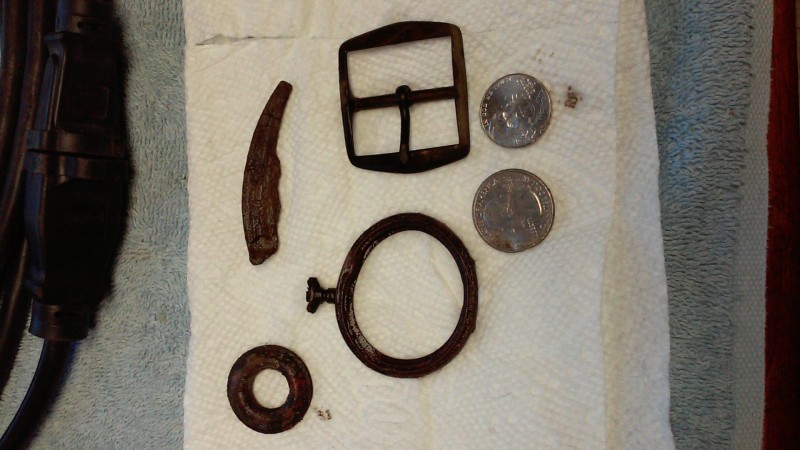

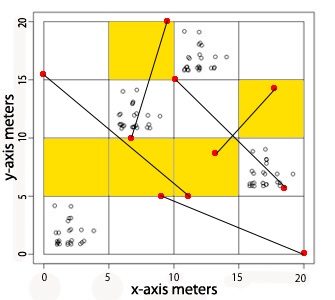
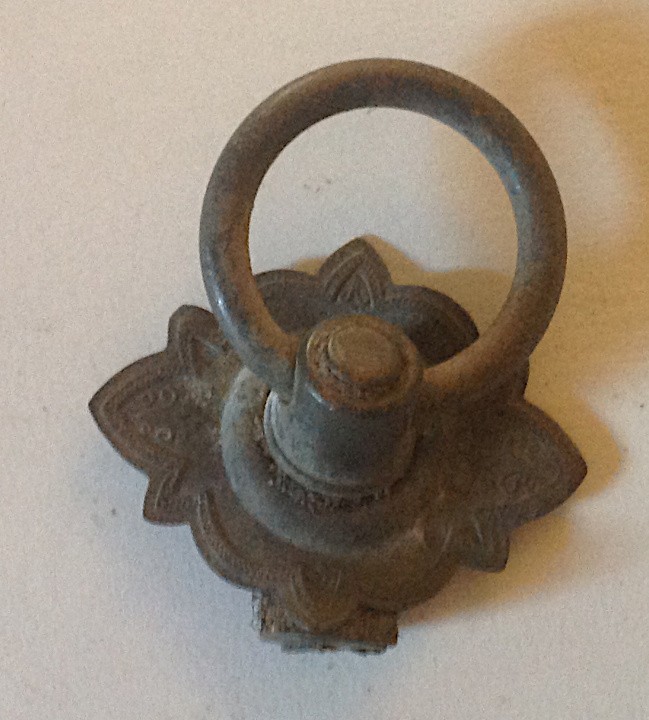




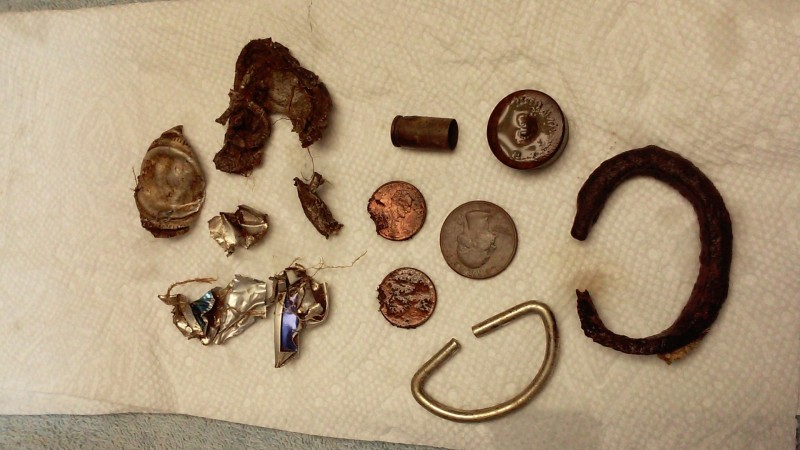
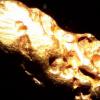
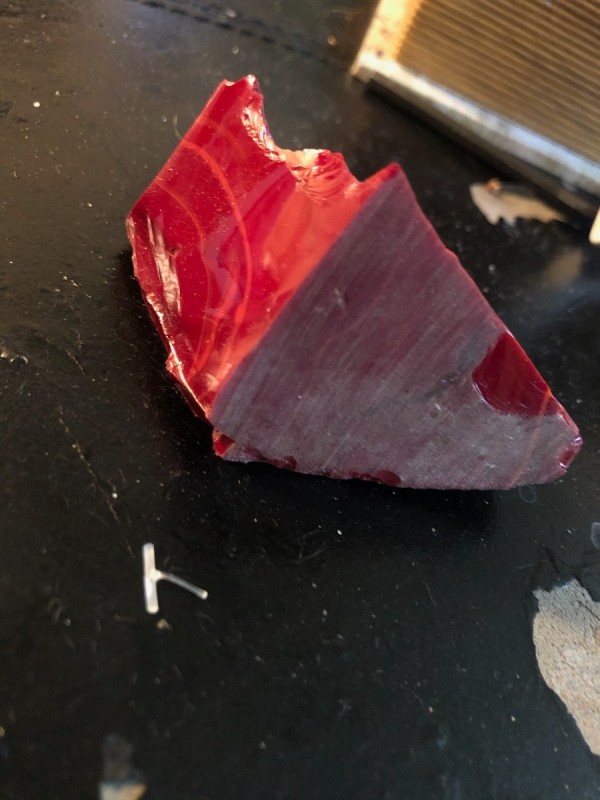
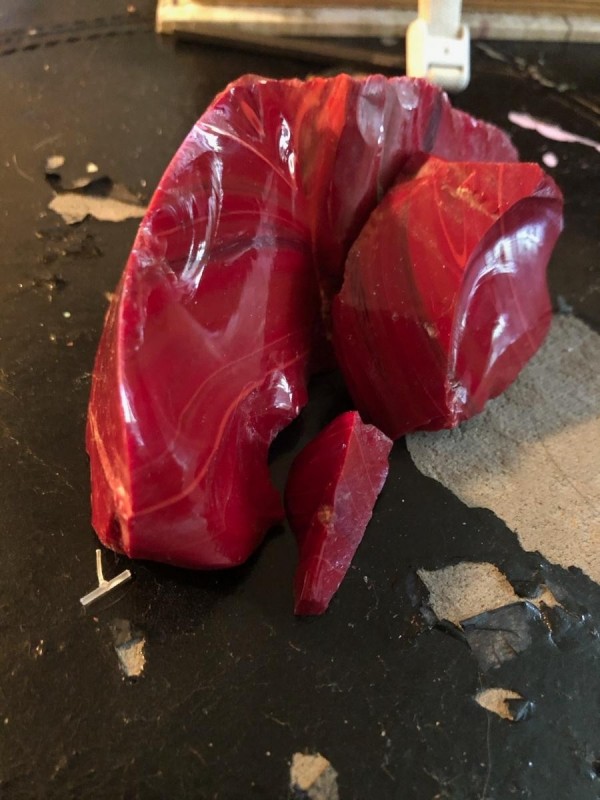
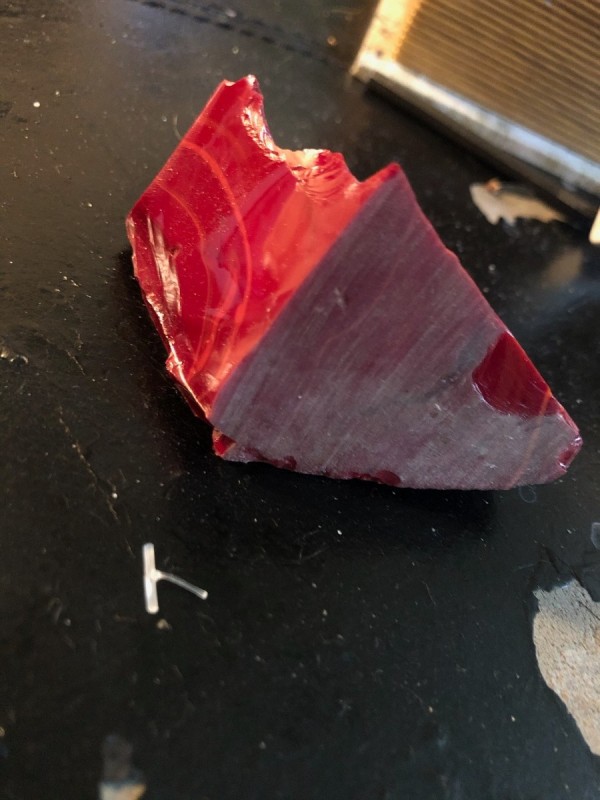
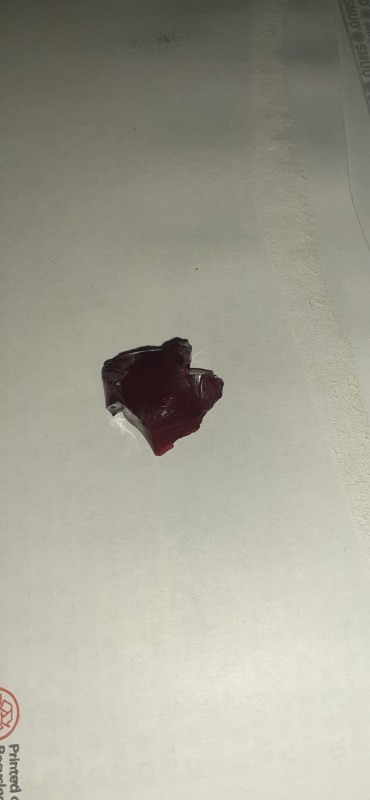
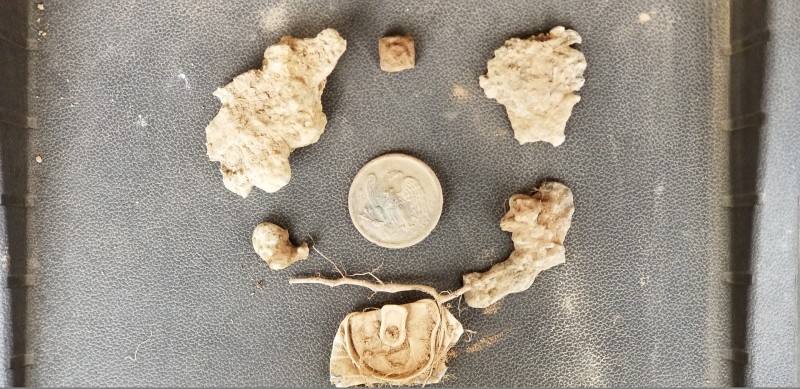
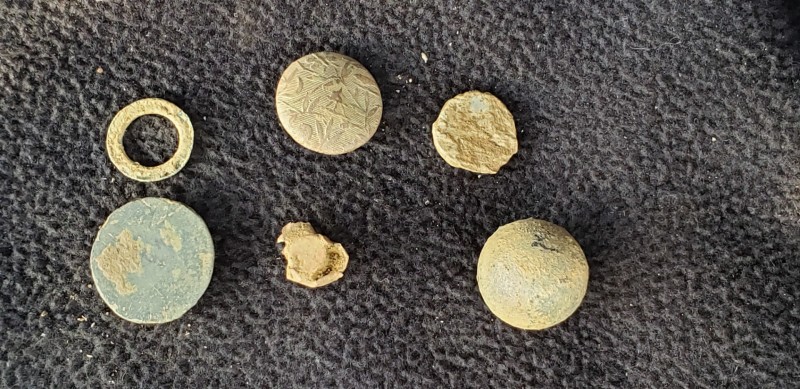
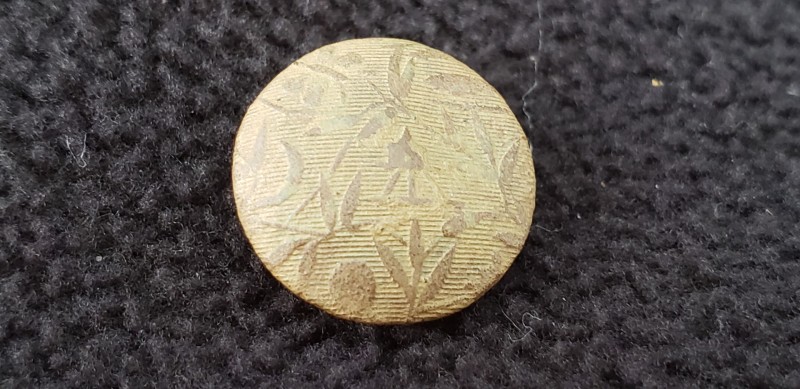
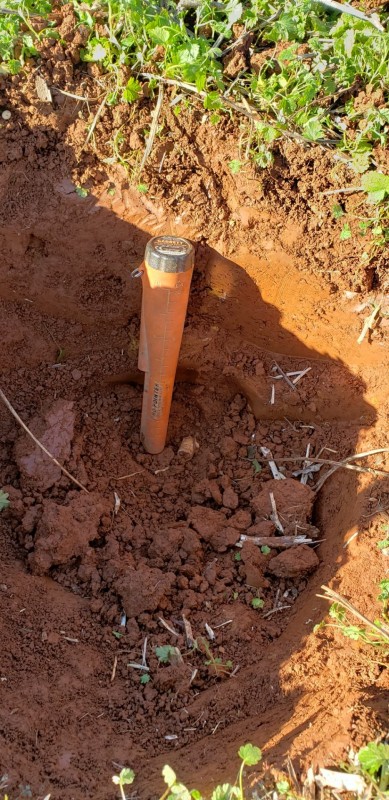
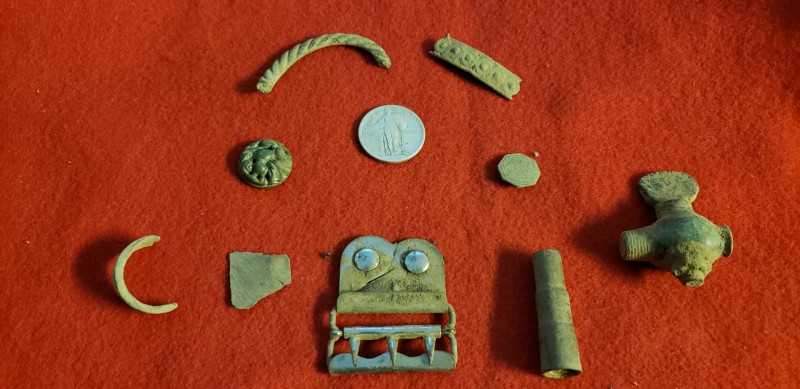
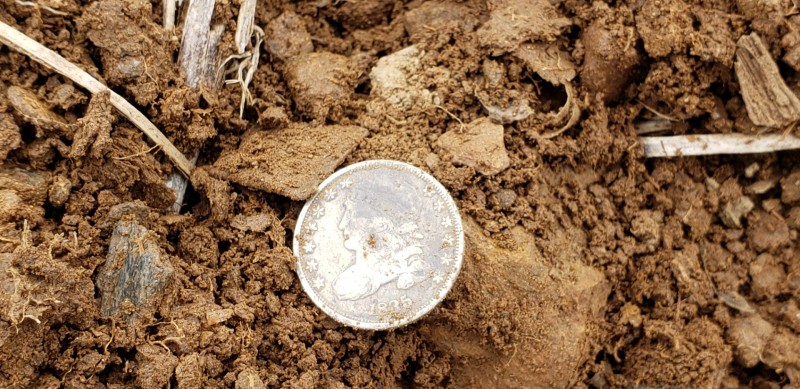
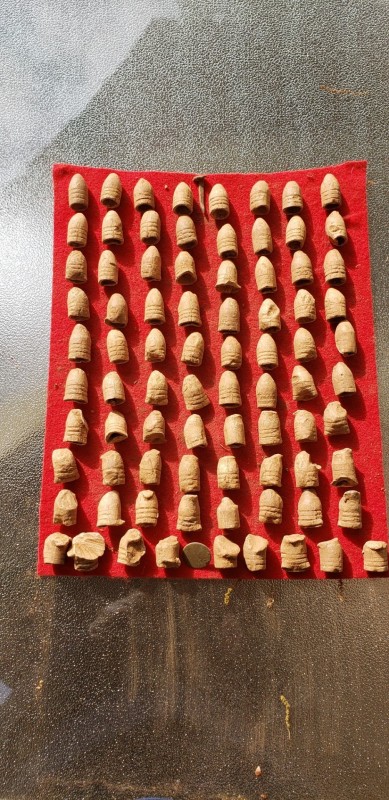
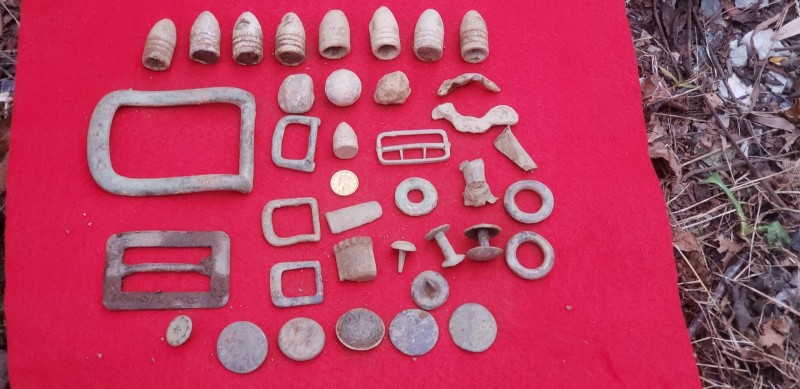
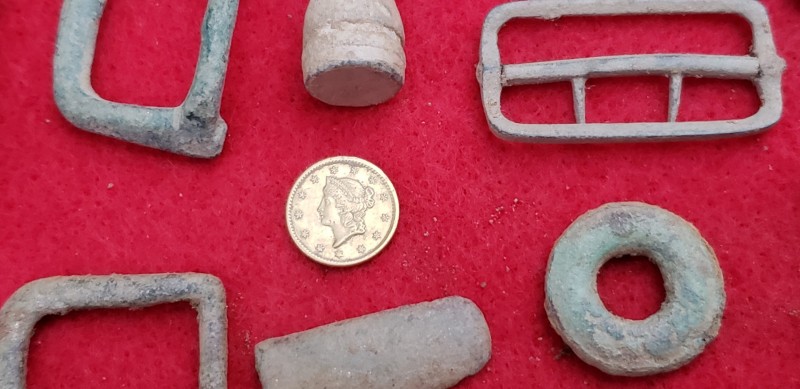
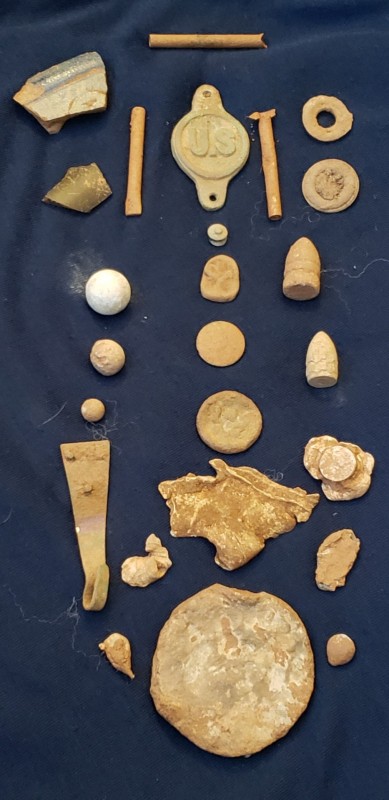
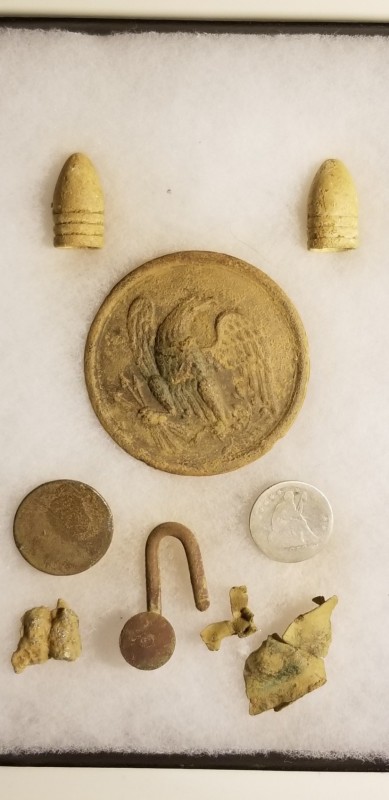
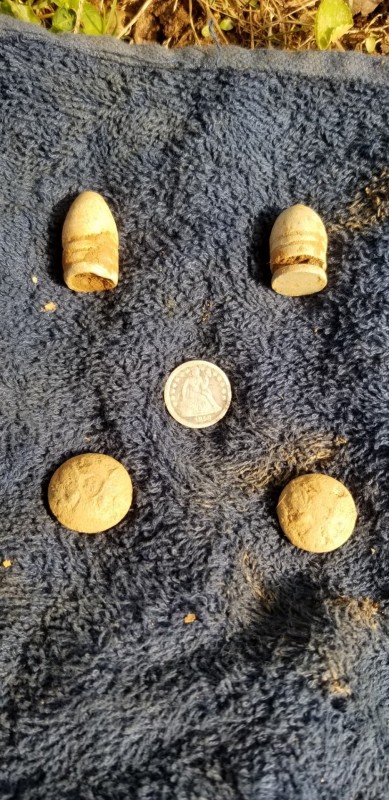
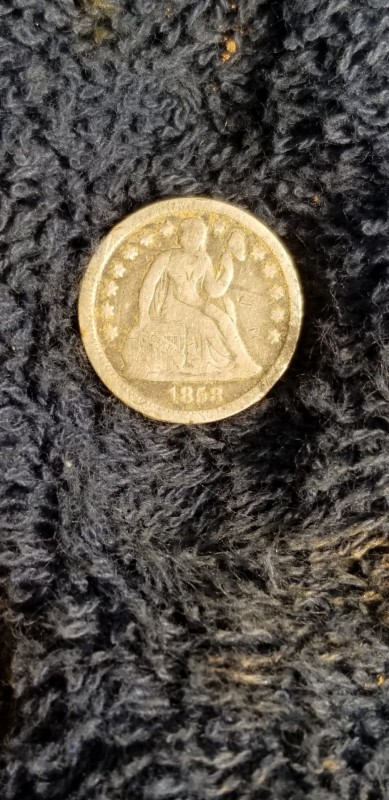
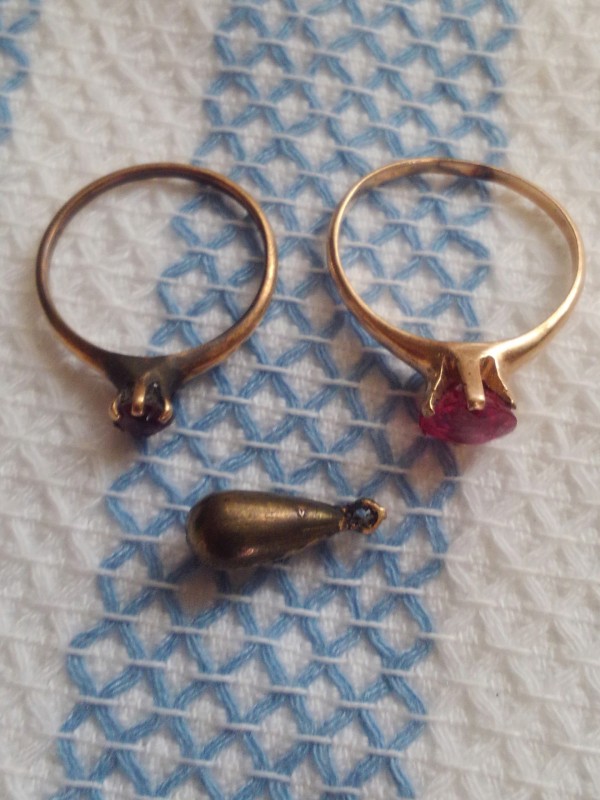




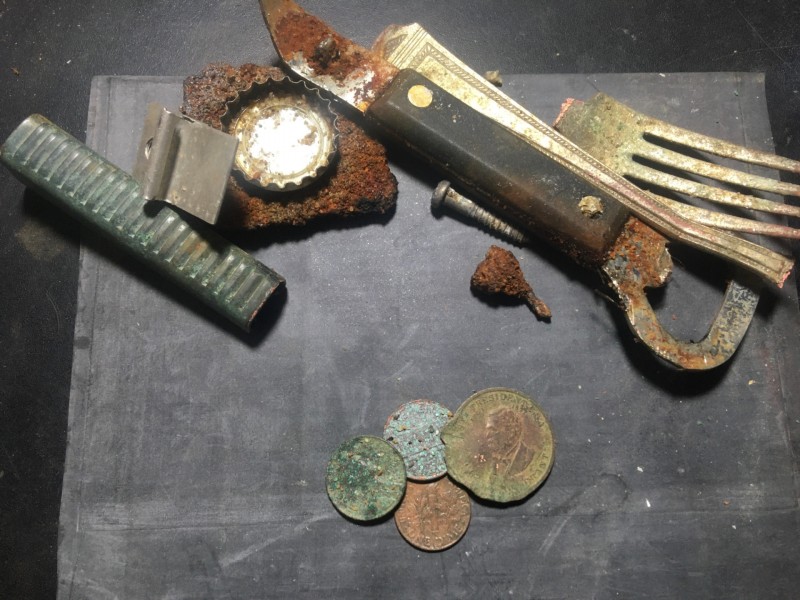
.thumb.jpg.95344db3aeef0a4c6c73420daa366191.jpg)
